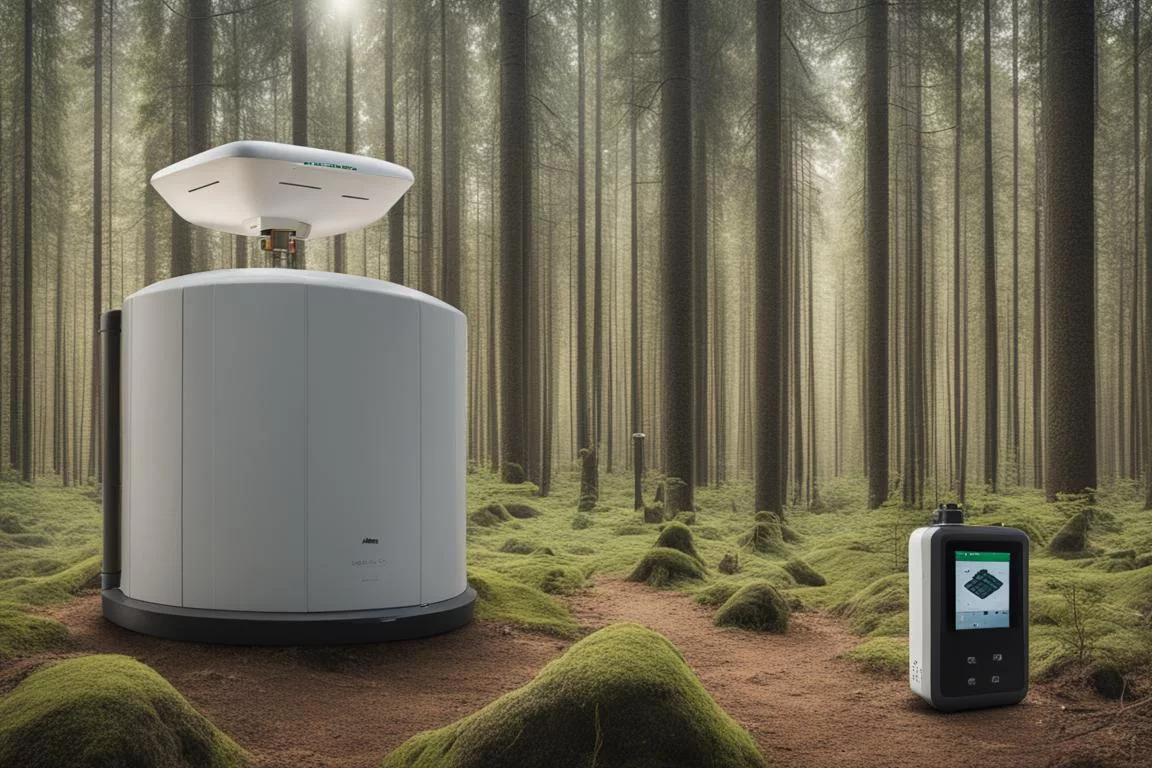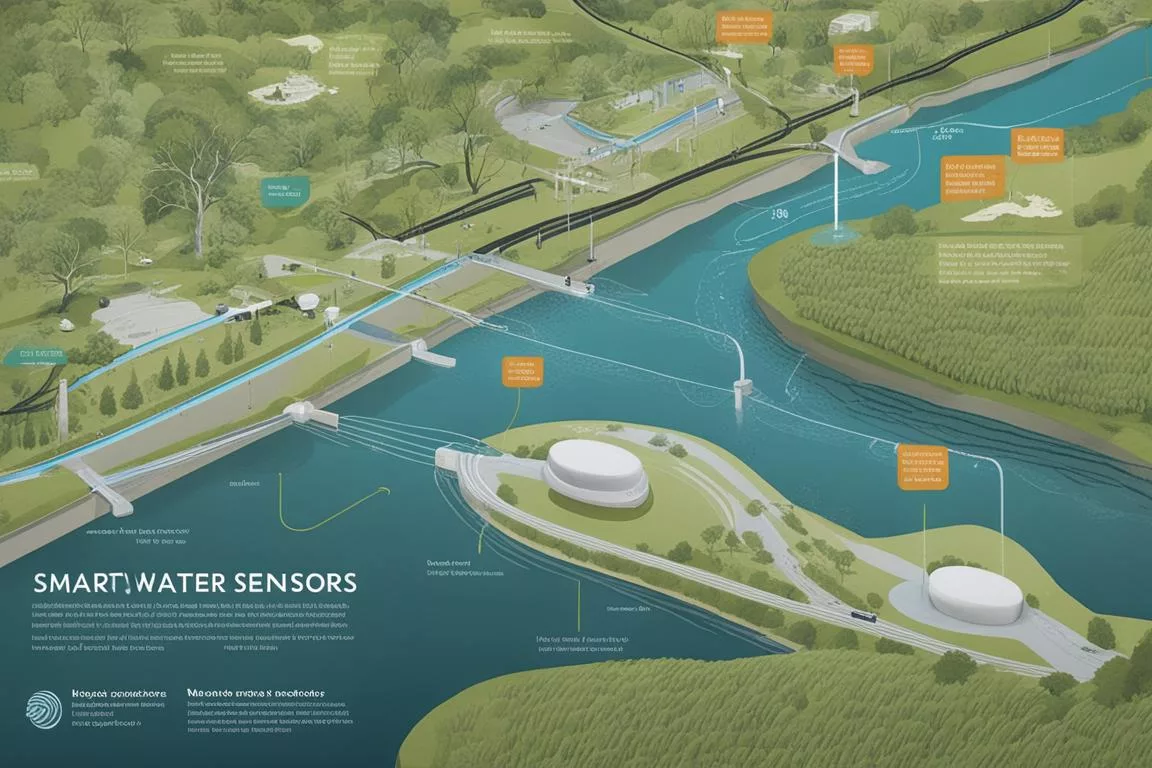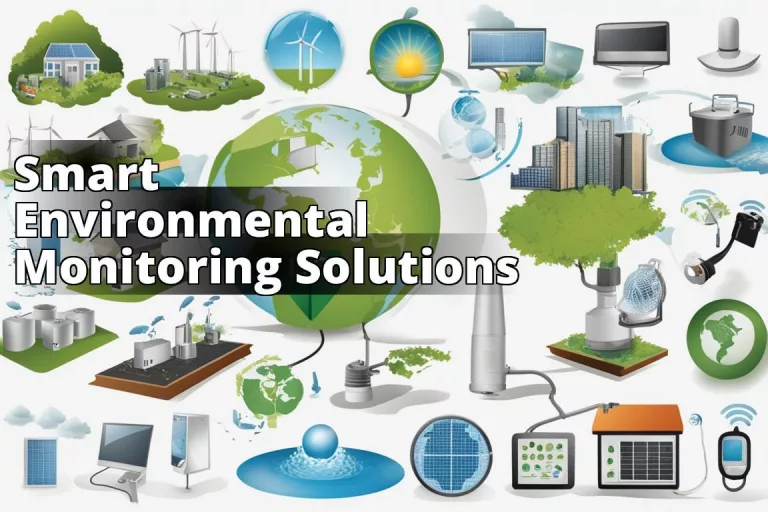In the battle against climate change and environmental degradation, the Internet of Things (IoT) emerges as a clandestine hero. It’s not just about your smartwatch or the voice-activated lights in your home anymore. IoT for environmental monitoring represents a significant leap toward a healthier, more sustainable planet. It’s about leveraging technology to do more than just simplify our lives; it’s about using it to save our world.
Learn about IoT for Environmental Monitoring
By reading this article, you will learn: – The definition and workings of IoT for environmental monitoring. – The benefits, challenges, and examples of IoT for environmental monitoring. – Best practices and platforms for implementing IoT in environmental monitoring.
What is IoT for Environmental Monitoring?
IoT for environmental monitoring is the application of interconnected devices designed to collect, transmit, and analyze data about our environment. This technology spans sensors, devices, and platforms that gather information on air quality, water conditions, soil health, and much more. Imagine a world where every drop of water, every puff of air, and every patch of soil can tell you a storya story about its health, needs, and threats. That’s the world IoT for environmental monitoring is striving to create.
The synergy between IoT and environmental conservation is not just innovative; it’s imperative. As we grapple with the consequences of climate change, having real-time, accurate environmental data becomes crucial. It’s like having a continuous health check-up for our planet, enabling us to diagnose issues quickly and respond effectively.
How does IoT for Environmental Monitoring Work?
At its core, IoT for environmental monitoring operates through a network of sensors and devices that are deployed across various environmental locations. These sensors collect data on parameters such as temperature, humidity, chemical compositions, and more. This data is then transmitted, often wirelessly, to a central system where it’s analyzed and visualized.

This is where the magic happens. The system can identify trends, forecast potential issues, and even trigger alerts or corrective actions. For instance, a rise in harmful chemicals in a river could automatically alert local authorities or even activate a containment procedure. It’s a proactive versus reactive approach to environmental management, powered by the real-time data streaming from IoT devices.
What are the Benefits of IoT for Environmental Monitoring?
The benefits of IoT for environmental monitoring are vast and varied. Here are a few highlights:
- Real-time Data: Immediate access to environmental data enables swift responses to emerging issues, potentially averting crises.
- Precision: IoT devices can monitor conditions at a granular level, uncovering insights that might be missed by broader methods.
- Cost Efficiency: Automated monitoring reduces the need for manual fieldwork, cutting costs significantly.
- Public Engagement: Data from IoT devices can be shared with the public, raising awareness and encouraging community involvement in environmental conservation.
These benefits collectively contribute to a more informed, responsive, and cost-effective approach to environmental management and conservation.
What are the Challenges of IoT for Environmental Monitoring?
Despite its potential, IoT for environmental monitoring isn’t without challenges. These include:
- Data Overload: The sheer volume of data generated can be overwhelming, requiring sophisticated analysis tools and techniques.
- Security and Privacy: With data being transmitted wirelessly, there’s a risk of interception or misuse.
- Deployment and Maintenance: Deploying and maintaining IoT devices in remote or harsh environments can be logistically challenging and expensive.
Addressing these challenges is crucial for maximizing the impact of IoT in environmental monitoring.
What are some examples of IoT for Environmental Monitoring?
1. Smart Water Management

Smart water management systems use IoT sensors to monitor water quality and levels in real-time, enabling early detection of pollution or anomalies. This technology not only helps in conserving water resources but also ensures the safety of the water we consume.
2. Air Quality Monitoring
Air quality sensors placed around cities can provide real-time data on pollutants, helping authorities to make informed decisions on reducing emissions and alerting the public to health risks.
3. Waste Management
IoT devices can optimize waste collection by monitoring fill levels of bins and dumpsters, reducing emissions from collection vehicles, and ensuring efficient recycling processes.
4. Smart Agriculture
IoT technology in agriculture can monitor soil moisture and nutrient levels, optimize water usage, and enhance crop yield, all while minimizing environmental impact.
What are the Best Practices for IoT in Environmental Monitoring?
To maximize the benefits while minimizing the challenges, consider these best practices:
- Data Management: Implement robust systems for managing and analyzing the vast data generated.
- Security Measures: Employ strong cybersecurity measures to protect data integrity and privacy.
- Community Engagement: Involve local communities in the deployment and maintenance of IoT devices, fostering a sense of ownership and collaboration.
What are the Best IoT Platforms for Environmental Monitoring?
Choosing the right platform is critical for the success of any IoT initiative. Platforms that offer scalability, robust data analytics, and easy integration with other systems are preferred. While specific recommendations may vary based on project needs, platforms like Microsoft Azure IoT, IBM Watson IoT, and Google Cloud IoT stand out for their advanced features and reliability.
In conclusion, IoT for environmental monitoring is not just a technological advancement; it’s a paradigm shift in how we approach environmental conservation. By harnessing the power of interconnected devices, we can gain unprecedented insights into the health of our planet, enabling us to protect and preserve it more effectively. As we move forward, it’s crucial that we continue to refine and expand these technologies, making them more accessible and effective in the fight against environmental degradation. The future of our planet depends on it.
Common Questions
What is Internet of Things for environmental monitoring?
It is a network of interconnected devices that collect and transmit data on environmental conditions.
How does IoT help with environmental monitoring?
IoT devices can track air and water quality, temperature, and other factors to provide real-time environmental data.
Who benefits from IoT in environmental monitoring?
Environmental researchers, government agencies, and conservation organizations can benefit from the data collected by IoT devices.
What if I’m concerned about data privacy with IoT?
IoT devices can use encryption and secure data storage to protect privacy and prevent unauthorized access.
How can IoT improve climate change monitoring?
IoT devices can provide more accurate and detailed data on climate change indicators, helping to better understand and address the issue.
What are the potential challenges of using IoT for environmental monitoring?
One challenge is ensuring the accuracy and reliability of IoT data, as well as addressing potential cybersecurity threats.
Next Steps
Round Table Environmental Informatics (RTEI) is a consulting firm that helps our clients to leverage digital technologies for environmental analytics. We offer free consultations to discuss how we at RTEI can help you.


